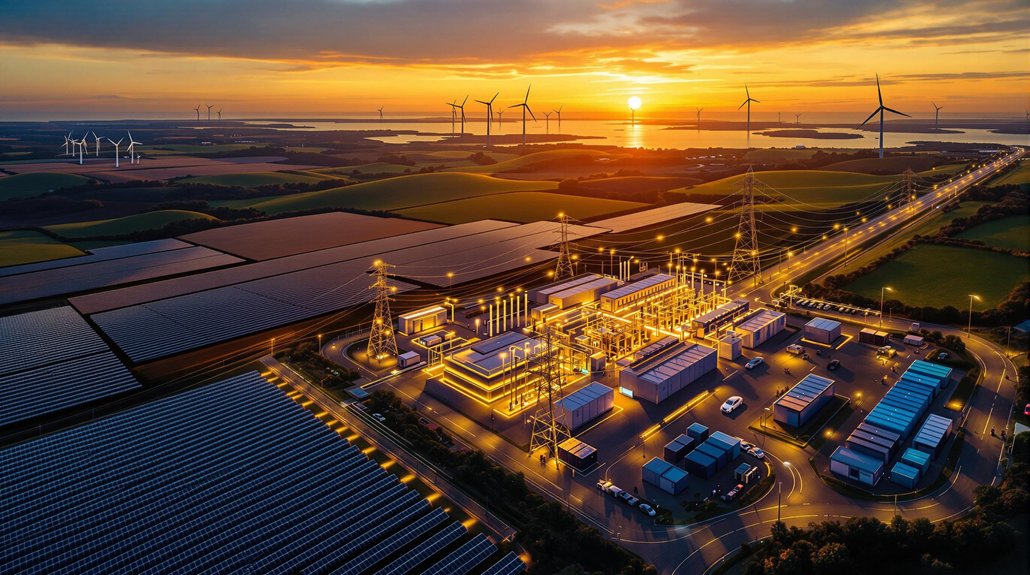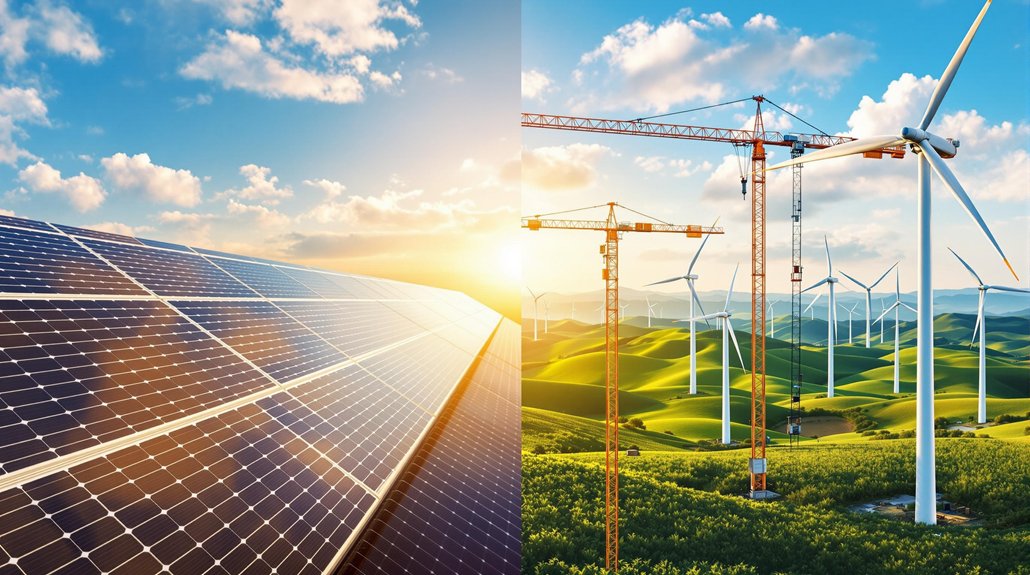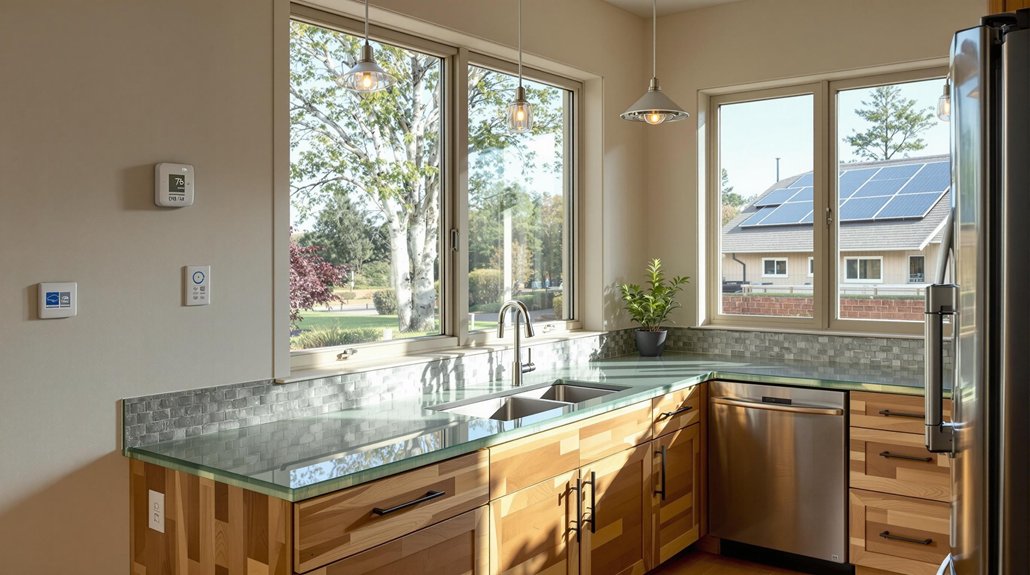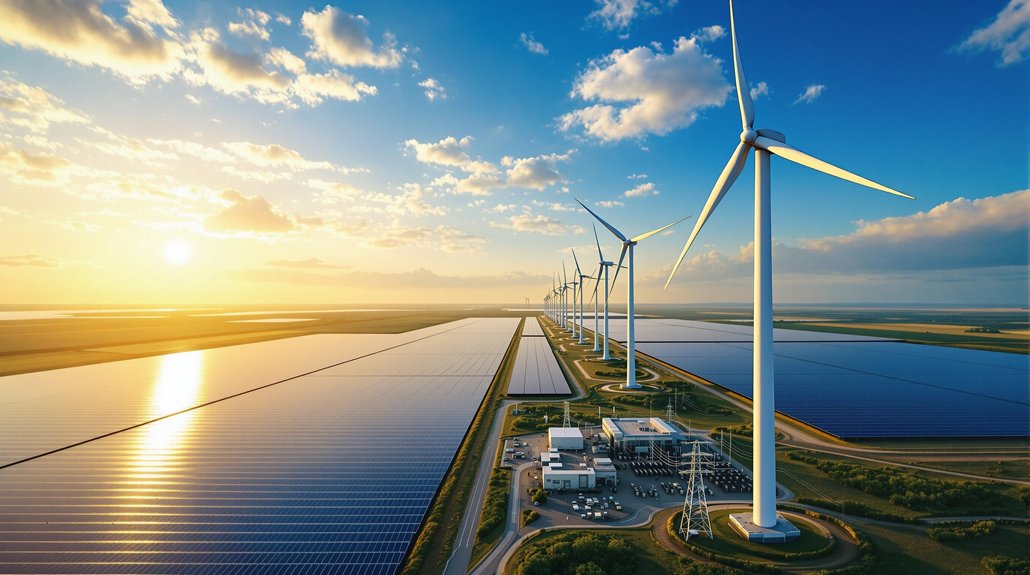Energy’s future depends heavily on interconnection between renewable sources and traditional systems. With electricity demand growing 3% by 2025, companies are investing in solar and wind power, which made up 71% of new plants in 2024. Technological innovations like AI, edge computing, and improved battery storage are helping manage this change. Though challenges remain with costs and permitting processes, the $5.6 trillion annual investment signals a major shift toward a cleaner, more integrated energy landscape.

Where will our energy come from in the decades ahead? Energy experts predict electricity use will grow 3% in 2025. Data centers, electric cars, and buildings need more power every year. Oil demand will likely peak by 2038, while renewables gain ground fast.
Solar and wind made up 71% of new power plants in 2024. Together with other clean sources like nuclear, they provided 42% of U.S. electricity. Companies bought a record 28 gigawatts of renewable energy last year. Still, natural gas remains the top U.S. power source at 43%.
Renewable growth surges while natural gas holds its ground as America’s primary electricity source.
The energy world faces tough choices. Only 32% of energy executives believe we’ll reach net-zero emissions by 2050. Most think it will take until 2070 or later. Rising costs make new projects expensive, with 31% of companies seeing double-digit cost increases. The industry acknowledges emission reduction as essential but argues for a measured transition pace.
New technology offers hope. Artificial intelligence helps make sense of energy data. Edge computing speeds up response times. Blockchain might make systems more secure. High Voltage DC lines can move electricity across continents. Large, cheap batteries could change how we store energy.
Politics and global relations shape energy’s future too. U.S. emissions are down 15.8% since 2005. China’s work in the Arctic raises concerns. Lengthy permitting processes continue to be a significant barrier to faster renewable energy deployment. Many countries are making it easier to build renewable projects. Energy productivity, or getting more from less, has improved 29% in the U.S. over ten years.
Energy companies are changing how they work. Most plan to update their computer systems within three years. They’re spending two or three times more on clean energy. Renewable energy investments are projected to create a sustainable economy worth over $2 trillion by 2032. Instead of focusing just on environmental goals, they now want clear financial returns.
The energy shift needs about $5.6 trillion each year until 2030. Companies invested $140 billion in clean energy supply chains last year. The challenge remains balancing today’s energy needs with tomorrow’s cleaner systems.
Frequently Asked Questions
How Quickly Can Interconnection Projects Be Completed?
Interconnection projects now take an average of five years to complete, up from two years in 2008.
Regional differences exist, with Texas processing requests in about 28 months while Vermont takes around 54 months.
Only 19% of projects requested between 2000-2018 are operational today.
Solar projects have a 14% completion rate, while battery projects are at 11%.
Recent reforms aim to speed up these timelines.
What Are the Costs for Average Consumers With Interconnected Energy?
Average consumers pay 15.12¢ per kWh for residential electricity.
Going green costs about $18 more monthly.
Commercial customers pay less at 12.55¢ per kWh, while industrial users pay only 8.45¢ per kWh.
Interconnection costs have risen dramatically, from $29/kW to $240/kW in some regions.
These costs affect energy prices differently based on location, usage patterns, and system size.
Who Oversees Security Protocols for Interconnected Energy Systems?
Security oversight for interconnected energy systems is shared across multiple agencies.
FERC approves mandatory cybersecurity standards, while NERC develops and implements these standards for the bulk electric system.
DOE’s CESER office provides technical expertise and coordinates incident response.
CISA works to strengthen the cyber ecosystem and shares threat intelligence with energy sector partners.
Together, they’re responsible for protecting America’s energy infrastructure from cyber threats.
Can Interconnection Technologies Work in Extreme Weather Conditions?
Interconnection technologies can function during extreme weather when properly designed.
Smart grid systems reroute power around damaged areas while IoT sensors provide real-time monitoring.
Grid hardening measures like steel poles and underground lines resist storm damage.
Microgrids and battery storage offer backup when main systems fail.
Regional interconnections allow power sharing between areas experiencing different conditions.
These technologies aren’t perfect but greatly improve reliability during disasters.
How Do Rural Communities Benefit From Energy Interconnection Initiatives?
Rural communities gain multiple benefits from energy interconnection initiatives. They see lower utility bills and new income from land leases for energy projects.
These projects create local jobs and increase tax revenue for rural governments. Interconnection improves grid reliability during outages and peak demand periods.
Communities also gain more control over their energy sources, while enjoying cleaner air and water from reduced pollution.









